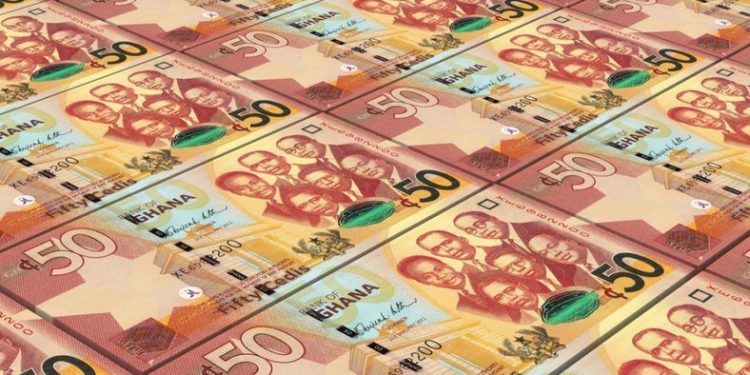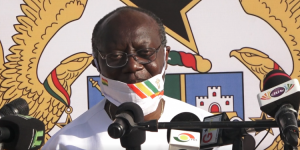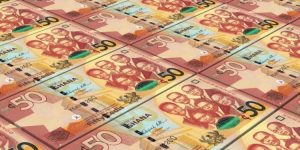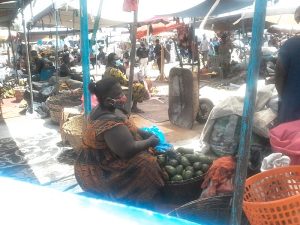Bank of Ghana chieftains are confident that the cedi is on the way to its best full year performance since it was floated in the 1980s; this despite recent worries that it has entered another period of significant depreciation.
So far the cedi has only depreciated by 1.6 percent against the United States dollar, its best performance over the first nine months of any year so far, bettering even last year’s performance in which it fell by just 3.6 percent for the full year, a feat made even more impressive since it was an election year; customarily the cedi falls fastest in election years pushed downward by government’s politically motivated excess deficit spending but despite an inordinate 11,9 percent fiscal deficit imposed last year by the effects of COVID 19 on government’s finances the cedi’s depreciation was almost fully contained.
This year however panic has emerged in some quarters because all of the cedi’s depreciation has come over the past two months or so. Indeed as at the end of June the depreciation rate was 0.0 percent. Since then however Ghana’s strong economic rebound, brought about by both monetary stimulus initiatives by the central bank and fiscal stimulus by government itself, since late March last year has put pressure on the cedi by raising demand for foreign exchange.
However central bankers posit that this is simply a temporary market correction that has more or less run its course. They point to several factors that will ensure the stability of the cedi’s exchange rate.
One is the build up of gross international reserves to well over US$11 billion, easily the highest level to date, which is engendering confidence that Ghana has sufficient forex to meet even sharply rising demand for foreign currencies
Indeed the BoG has over the past three fortnightly forward forex auctions increased its supply onto the market from between US$25 million and US$50 million as originally planned in its auction calendar for the year, to US$75 million at each auction. Instructively despite demand at these auctions still exceeding supply more than two times over, none of the bids made have reached GHc6 to a dollar, even for delivery 75 days after the date of the auction.
The latest forward foreign exchange auction, conducted in the third week of September by the Bank of Ghana suggests that despite the recent significant depreciation of the cedi against the United States dollar, a sustained fall in the national currency’s exchange rate is not being expected by forex users and the banks that bid on their behalf. The central bank uses its fortnightly forward auctions for purposes of price discovery with regards to expected trends in the exchange rate.
At the latest auction held US$50 million was put up for sale but the intensity of Ghana’s ongoing economic rebound reflected in cumulative demand which at US$113;750 million was 2,68 times the amount put on sale.
Despite the strong excess of demand over supply however, bids remained close to spot market rates; instructively no bids reached the important psychological level of GHc6 to US$1. Indeed the highest bids were for delivery in 30 days time, suggesting that forex traders and users expect the cedi to regain some of its ongoing losses thereafter. Bids for delivery in 30 days time reached an upper limit of GHc5.9550 which is above the highest bids for 45 days delivery and 60 days delivery of GHc5.9450 and GHc5.9400 respectively indicating expectations of marginal cedi appreciation during the second month after this week’s auction.
However, forex bidders are not fully confident of the cedi’s trajectory going forward. There were no bids at all for delivery of forex for the longest tenor on offer, of 75 days.
The shortest delivery periods of seven days and 15 days respectively attracted bids slightly above the current spot market rate – the highest bid for 15 days delivery was GHc5.9600 – suggesting that forex market participants feel the cedi’s ongoing depreciation bout has not quite run its full course but what is left will only ben a shallow fall in value before picking up beyond the 30 days mark.
As usual most of the bids made, and accepted by the BoG were for the shortest future delivery tenor of seven days with US$76.6 million being requested but only US$25.5 million in bids for the shortest tenor being accepted by the central bank
Importantly this week the BoG will receive the first US$575 million out of the US$1.5 billion syndicated loan for cocoa purchases from farmers during the 2021/22 crop season to hit its account. Since the farmers are paid in cedis, this money will add to Ghana’s international reserves, taking them – at least termporarily, to about US$ 12 billion, which is about twice the level maintained during the last sustained bout of sharp cedi depreciation, around the middle of the previous decade.
It is most instructive that during that two year period of steep cedi depreciation, the array of bureaucratic measures introduced by the BoG under the Governorship of Dr Henry Kofi Wampah at the time, aimed at forcing a reduction in demand for forex, but the market interpreted this as a desperate move derived from a desperate situation of demand/supply imbalance, destroyed all confidence in Ghana’s ability to supply the market adequately. This persuaded forex traders and users to bypass the regulatory restraints on demand and build up as much forex as possible for themselves thus generating excess demand that sent the cedi spiraling downwards.
But the current strategy is exactly the opposite of that one and is thus delivering the opposite result; it aims to build confidence among forex users and traders in Ghana’s ability to meet demand, thus cushioning current demand and resultantly propping up the cedi’s exchange rate. Furthermore, forward auctions make for efficient price discovery and this has pulled the rug out from under the feet of currency speculators who used to take positions against the cedi for profit, the excess demand for forex they thus created serving to actualize the steep cedi depreciation they had bet on.
Another factor that can be expected to prop up the cedi is the possibility that government will go ahead with its considered US$1.5 billion green bond issuance on international capital markets, to make up for the shortfall in what it took off the market in March when it cut its latest Eurobond issuance from US$ 5-0 billion to US$3.0 billion because it considered some of the offers too expensive. With the US Federal Reserve Bank about to begin tapering its bond buying programme as a precursor to a reduction in monetary easing – started last year to boost economic activity in the face of a COVID 19 economic slump – Ghana’s government is considering doing another issue now before interest rates inevitably rise. If government goes ahead with this issuance, then foreign reserves and forex supply on the local market would both improve further. For now, even the sheer possibility of this happening is giving the cedi strength.
Lastly, even though Ghana’s merchandise trade balance has narrowed significantly over the past two years, it remains positive and rising crude oil prices are set to improve it further. A higher import bill relative to export receipts during the first eight months of this year – deriving from Ghana’s strong economic rebound – resulted in a lower trade surplus of US$874.8 million in the year to August 2021, compared with a surplus of US$1.4 billion recorded in the same period of 2020 but it was a surplus all the same and it is being supported by strong inward remittances, these exceeding US$2 billion during the period.
All this points towards a recovery of the cedi rather than further depreciation even with demand for forex rising as a consequence of Ghana’s strong economic rebound. While the BoG is obviously talking up the cedi’s strength in order to enhance the confidence that forex users and traders have in its stability, the central bank’s confidence is well justified by the data – and indeed the macroeconomics underlying it.







